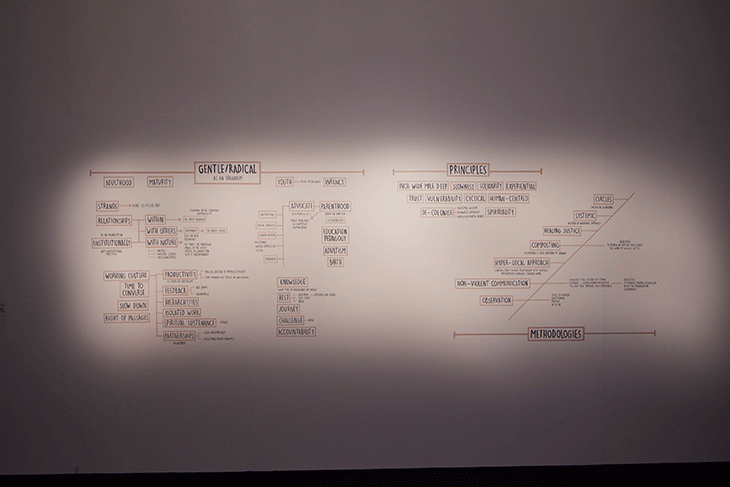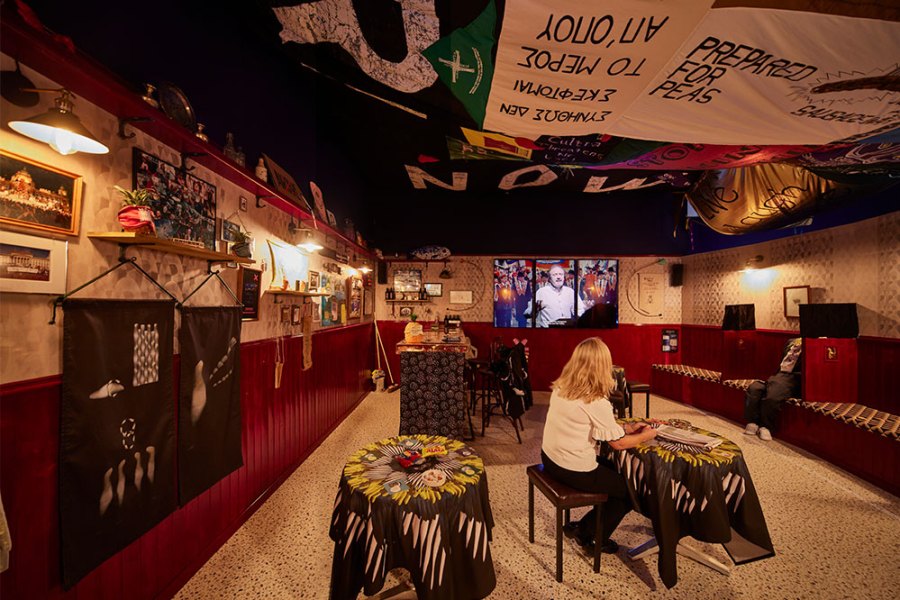In the summer of 2018, I went to Utrecht to cover the city’s annual Gaudeamus International Composers Award. The night before the award was announced, I was in a bar drinking with some of the nominees. You should all get together and insist on sharing the prize between you, I told them, since the kudos of calling yourself a Gaudeamus award-winner would probably mean more, in terms of future commissions and so forth, than whatever prize money you may receive tomorrow. They laughed good-spiritedly at my suggestion. (The following day the winner was announced and it was not one of my drinking partners.)
A year later, I was gratified and somewhat amused when all four nominees for the 2019 Turner Prize – Helen Cammock, Lawrence Abu Hamdan, Tai Shani and Oscar Murillo – insisted on being regarded as a single collective and sharing the prize between them. I imagine the organisers were less amused. After all, the whole drama of awards relies on the tension generated while we wait for the judges’ decision, the pleasure of making guesses, the cheers of one table at a black-tie event – and the crestfallen looks at another – when the results are finally announced.

Installation view, Black Obsidian Sound System at the Turner Prize 2021, Herbert Art Gallery and Museum, Coventry. Photo: Doug Peters
With the 2020 edition cancelled (instead, ten artists were selected to receive a £10,000 bursary), this year’s Turner Prize is really the first since Murillo, Shani, Abu Hamdan and Cammock pulled off their joint victory. The choice of this year’s nominees, each an artist-run collective of between two and 70 members, affects a kind of fidelity to that gesture by again foregrounding the work of groups over individuals. But the list might also have been intended to act as a bulwark against such a thing happening again. One of the nominees (Black Obsidian Sound System; B.O.S.S. for short) has already bristled in an open letter about being ‘instrumentalised’ by the jury in order to shore up the Turner Prize’s radical image – an image that its principal organiser, the Tate, fails to live up to. The museum group, they say, refuses to properly recognise the collective action of its own staff, many of whom went on strike last year in response to a wave of redundancies.
All the artists in this year’s Turner Prize exhibition, held at the Herbert Art Gallery and Museum in Coventry, have practices whose focus lies beyond the museum walls. As Juliet Jacques wrote in Frieze when the nominees were first announced, art is here repurposed ‘to fill gaps in [public] service provision’ after a decade of austerity. This introduces questions of representation: not just how to represent, within the white cube, work that largely takes place outside it, but also which larger groups these collectives are being asked to speak for. At the press preview, lead curator Hammad Nasar emphasised the geographical spread of the nominees. With B.O.S.S. in London, Gentle/Radical based in Cardiff, Array Collective hailing from Belfast, Cooking Sections working largely on the isle of Skye (at least recently), and Project Art Works coming from Hastings, there’s a sense of ticking off compass points. Similarly, in the exhibition catalogue, Black Obsidian Sound System is described as ‘bringing together a community of queer, trans and non-binary black people and people of colour’; Project Art Works as a response to the ‘gifts and impacts’ of neurodivergence. The more time I spent in the exhibition, the more bizarre it began to feel that someone was going to pick a ‘winner’ from among these groups – an act that seems to force these collectives into a logic of contest and rivalry so far removed from their stated aims and intentions as to appear almost perverse.

Installation view, Gentle/Radical at the Turner Prize 2021, Herbert Art Gallery and Museum, Coventry. Photo: David Levene
Lists of precepts and goals figure heavily in the works on show, which testifies less to some latent authoritarianism than to the sheer difficulty of working in large groups in a way that ensures everybody’s voice will be heard. A wall diagram in the room dedicated to Gentle/Radical features a list of ‘Principles’, which include ‘slowness’, ‘solidarity’, and ‘spirituality’; Kate Adams’ drawing for Project Art Works, Cosmologies of Care – Drawing III – Navigating Systems (2021), lists strategies such as ‘acting on free will’, ‘being in wild places’ and ‘love’ in a kind of spiral roadmap; a flag bearing ‘Rules of Array’ in the Northern Irish collective’s installation enjoins viewers to ‘get out and campaign with your local activist groups’ and have a ‘geg’ (Belfast slang for ‘laugh’). Rarely has an exhibition of contemporary art been so explicit. All of these artists are happy to show and tell. Narrators and voiceovers of various kinds feature in every installation.
There is candour here, but that’s not to imply a lack of artistry. The twin monoliths of B.O.S.S. – a sphere of black obsidian and a tower (also black) of loudspeaker cases – are a bold sculptural presence full of mythic symbolism and barely contained energies. Gentle/Radical’s three-channel video portraits draw on a rich art-historical legacy, from Byzantine triptychs to the films of John Akomfrah. Upon entering the room of Project Art Works, dominated by a wooden shelving structure holding stacks of piled- up painted canvases, I was immediately reminded of Marcel Broodthaers’ Dix-neuf petits tableaux en pile (Nineteen Small Paintings in a Pile; 1973). Such comparisons are superficial. These artists are doing different things. But they show something of the futility of an extractivist gaze that seeks to mine the work of subjects outside the art world for some piquant local colour. Nor are these artists as ‘outside’ as all that. There are familiar names in this exhibition, albeit buried deep in the credits: film-maker Andrew Kötting and his daughter Eden (Project Art Works); artists Phoebe Collings-James and Evan Ifekoya (B.O.S.S.). Both Alon Schwabe and Daniel Fernández Pascual of Cooking Sections teach at the Royal College of Art, while many of the members of Array Collective have MFAs and extensive individual exhibition histories.

Installation view, Project Art Works at the Turner Prize 2021, Herbert Art Gallery and Museum, Coventry. Photo: Garry Jones
Perhaps it is just structurally impossible to think beyond the traditional limits of art from within the centre of one of its most august institutions. Still, that is not a problem for these artists, all of whom are clearly doing good and important work. For more than 20 years, Project Art Works has served a wide community of people with complex care needs, providing training and inclusive studio infrastructure, building support networks, and organising field trips and exhibitions. Array Collective has campaigned tirelessly for LGBTQ+ and abortion rights, alongside local community projects in Northern Ireland: their work as artists is inseparable from their activism (of which the film and the pub-like stage set where it is screened at the Herbert offer but a glimpse). Gentle/Radical has established a broad coalition of artists, youth workers, ministers, teachers and activists whose workshops, clubs, and symposia in Cardiff have made a palpable difference. B.O.S.S. has built up valuable infrastructure which has spread joy in south London while documenting and sustaining the legacies of Black British culture. Cooking Sections’ ecological focus has gone way beyond raising awareness: they have worked with large professional kitchens to change their supply chains and intervene in particular ecosystems to improve the quality of the soil and water – feats with far more significance than the rather polite aerial videos of Scottish salmon farms presented as their contribution to this exhibition.
I have no doubt that all of these people deserve this prize money. Just give it to them. All of them. And let them carry on with what they were already doing anyway.
Unlimited access from just $16 every 3 months
Subscribe to get unlimited and exclusive access to the top art stories, interviews and exhibition reviews.














![Masterpiece [Re]discovery 2022. Photo: Ben Fisher Photography, courtesy of Masterpiece London](http://www.apollo-magazine.com/wp-content/uploads/2022/07/MPL2022_4263.jpg)
It’s time for the government of London to return to its rightful home